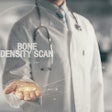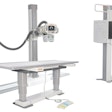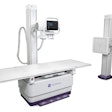Digital radiography (DR) is opening up a big lead over computed radiography (CR) as the most popular choice for x-ray imaging in hospital radiology departments in the U.S., according to a new report on hospital-based x-ray equipment and utilization trends.
Based on a national survey of general hospitals, the report describes how DR and CR have combined to help hospital administrators reduce x-ray imaging equipment inventories slightly over the past five years, despite increasing procedural volume.
"They are getting more efficiency from their DR and CR equipment," said Lorna Young, senior director of market research at IMV Medical Information Division, the market research firm in Des Plaines, IL, that performed the analysis.
The survey found that the hospitals' combined installed base of general x-ray equipment actually fell 1% per year between 2005 and 2010, to an estimated 15,900 fixed x-ray radiography systems operating in main radiology departments.
"The loss of 610 units is not a huge decline, but it is certainly not growth," Young said.
In addition, an estimated 12,770 mobile/portable x-ray units were owned or managed last year by 4,245 radiology departments. This translates into an average of three mobile/portable x-ray units per hospital, according to the report.
The report confirmed that the conversion from film-based x-ray to digital imaging is almost complete in the U.S. In 2010, 70% of hospital-based systems used CR technology, and DR accounted for 26% of the fixed x-ray units. Only 4% still used film, a phenomenal drop from the one-third of hospital-based x-ray units still based on film technology just five years earlier, Young said.
CR's current prominence may be short-lived, however, with survey results suggesting most new equipment sales will be DR units. Of those respondents who are planning to buy new equipment, 78% said they plan to buy DR. The remaining 22% said they plan on acquiring CR systems.
"Not everyone is buying new equipment in a given year, but when they do buy, they tend to buy DR equipment," Young said.
Overall, purchasing interest is strong, according to the report. Administrators at more than half of the nation's hospitals plan to purchase at least one x-ray unit in the next three years.
Approximately 16% of respondents are planning to shrink the size of their x-ray equipment installed base.
Utilization growth
Based on survey findings, the report estimated that annual procedure volume for fixed, general x-ray equipment grew 5.5% per year from 2005 to 2010. About 182.9 million procedures were performed on general x-ray equipment in the main radiology departments of U.S. short-stay, acute-care hospitals in 2010. Approximately 140.1 million procedures were performed in 2005.
Overall, chest studies accounted for 44% of x-ray volume in 2010. Abdominal/pelvic exams covered 17%, while extremity and spinal procedures were responsible for 15% and 13%, respectively.
In 2010, an additional 67.6 million procedures were performed at associated hospital locations where the x-ray equipment is managed by radiology. Approximately 48% of those procedures were performed in outpatient clinics outside the hospital. Another 26% were conducted in the emergency room, and 25% originated from imaging centers owned by hospitals. Orthopedic (13%), surgery/operating room (11%), and hospital outpatient departments (10%) were also contributors.
Data for the report were drawn from an online survey of 362 radiology administrators and managers who were randomly selected from a universe of 4,895 short-stay general hospitals in the U.S.
By James Brice
AuntMinnie.com contributing writer
February 10, 2011
Disclosure notice: AuntMinnie.com is owned by IMV, Ltd.



















